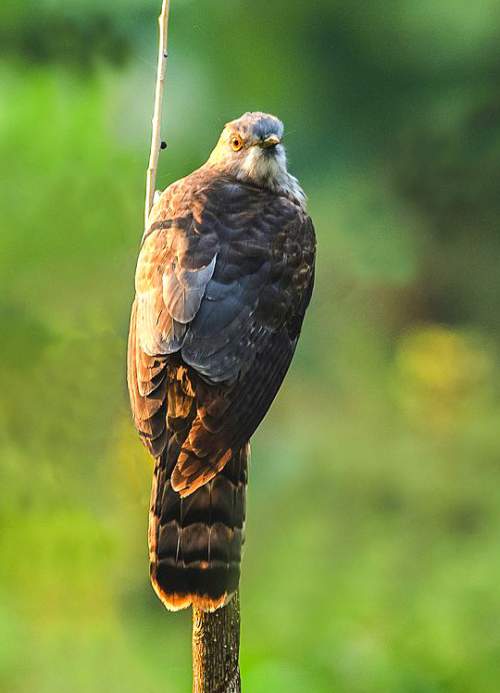The European nightjar (Caprimulgus europaeus) belongs to the family of nightjars, Caprimulgidae. These species of nightjars are distributed in Pakistan, Northwest India, Europe, Central and West Asia and eastern, western and southeastern Africa. The European nightjar is a nocturnal and crepuscular bird, characterized by long wings, short legs and short bill. There are six recognized subspecies of these nightjars.
European nightjar - Overview
- Scientific name: Caprimulgus europaeus
- Species author: Linnaeus, 1758
- Synonyms: Caprimulgus europæus Linnaeus, 1758
- Family: Caprimulgidae › Caprimulgiformes › Aves › Chordata › Animalia
- Common Name: European nightjar
- Other languages: Chinese: 欧亚夜鹰, French: Engoulevent d’Europe, German: Ziegenmelker, Spanish: Chotacabras europeo, Russian: Обыкновенный козодой, Japanese: ヨーロッパヨタカ, Arabic: السبد الأوروبي,
- Other names: Common Nightjar, Eurasian Nightjar
- Distribution: Pakistan, Northwest India, Europe, Central and West Asia, eastern and southeastern Africa
- Diet and feeding habits: flying insects, grasshoppers, beetles, mantises, mayflies, dragonflies, crickets, moths
- IUCN status listing: Least Concern (LC)
Appearance, physical description and identification
The European nightjar (Caprimulgus europaeus) is a small nocturnal bird measuring about 25 to 30 cm in length and weighing 50 to 100 grams. The wingspan is 50 to 60 cm. The upperparts are grayish-brown in adult nominate species. There is intensive streaking with black and different shades of brown. There is a pale brown collar on the nape. The moustachial line is whitish.The European nightjar wing is grayish brown on the upper side with buff spotting. The grayish-brown underparts have brown barring and spotting. The bill is grayish black and there are bristles around the mouth. The irises are dark brown and the legs and feet are pale brown. The male European nightjar can be differentiated while flying by the white wing patch across three primary feathers and the white tips of outer tail feathers. The call of the male European nightjar is a continuous churring sound.
 |
| Birds of India - Image of European nightjar - Caprimulgus europaeus |
 |
| Indian birds - European nightjar - Caprimulgus europaeus |
 |
| Birds of India - European nightjar - Caprimulgus europaeus |
Origin, geographical range and distribution
The European nightjar is distributed in Pakistan, Northwest India, Europe, Central and West Asia, western, eastern and southeastern Africa. The subspecies C. e. dementievi is distributed in Trans-Baikal Russia and Northeastern Mongolia. The subspecies C. e. plumipes is distributed in Northwest China and West and South Mongolia.The European nightjar subspecies C. e. unwini (Hume's nightjar) is distributed in Iraq, Iran, Tien Shan region, South Turkmenistan, Uzbekistan, Kashgar region (China), North Pakistan and northwest India. The subspecies C. e. sarudnyi is distributed in Kazakhstan, Kyrgyzstan, Tarbagatai Mountains and Altai Mountains.
The European nightjar subspecies C. e. meridionalis is distributed in Northwest Africa, Southern Europe, Crimea, Caucasus Mountains, Ukraine, Iran and Caspian Sea area. The subspecies C. e. europaeus is the nominate species and is distributed in north and central Europe and north Central Asia. More than 150 Important Bird and Biodiversity Areas (IBA) have been identified in 24 countries.
Ecosystem and habitat
These European nightjar species inhabit a wide range of open habitats such as drylands, open country, highlands with ground vegetations, plains with some trees and small bushes, heaths, moorland, forest clearings, abandoned agricultural lands and newly planted woodland. They occur in breeding grounds up to 3,000 meters and in wintering grounds up to 5,000 meters.Diet and feeding habits
The diet of the European nightjar is mostly flying insects like grasshoppers, beetles, mantises, mayflies, dragonflies, crickets and moths.Reproduction and breeding habits
The breeding season of these European nightjar species is from May to August. It is believed to be significantly earlier in northwest Africa and western Pakistan. These birds start breeding when they are one year old. The males after returning from wintering establish territories. The nightjars are monogamous during the breeding season.The European nightjars lay the eggs on the bare ground, leaf litter or pine needles. The clutch may consist of one or two eggs. The chicks hatch out in 20 days and fledge in 16-17 days. Both the parents feed the chick with regurgitated ball of insects. Quite often, the early breeders may raise a second brood. The fledglings become independent when they are seven week old.
Migration and movement patterns
These European nightjar species are mostly migratory. The nominate subspecies C. e. europaeus leave their breeding grounds during August-October to reach their wintering grounds in Africa. They return to their breeding grounds in the early summer.Conservation status and concerns
The global population size of the European nightjar (Caprimulgus europaeus) is estimated to be around 1,410,000 to 3,000,000 individual birds. The overall population size is considered to be on the decline, due to habitat loss, reduced food availability and human disturbance at the roosting and breeding sites. Their generation length is 5.6 years. These nightjar species have large range and population.The European nightjar does not approach the thresholds for being Vulnerable either under the range size criterion or under the population trend criterion or under the population size criterion. The IUCN (International Union for Conservation of Nature) has categorized and evaluated the European nightjar (Caprimulgus europaeus) and has listed it as of "Least Concern".
1.Image source: https://commons.wikimedia.org/wiki/File:%C5%9Eivanxap%C3%AEnok.jpg
Image author: Dûrzan cîrano | License: CC BY-SA 3.0
2.Image source: https://en.wikipedia.org/wiki/File:Caprimulgus_europaeus_1200x855.jpg
Image author: Jenny Th | License: CC BY-SA 3.0
3.Image source: https://commons.wikimedia.org/wiki/File:Lelek.jpg
Image author: Andrzej Łuczak, woochuck@onet.eu | License: CC BY 3.0
Current toipc in Birds of India: European nightjar - Caprimulgus europaeus.













